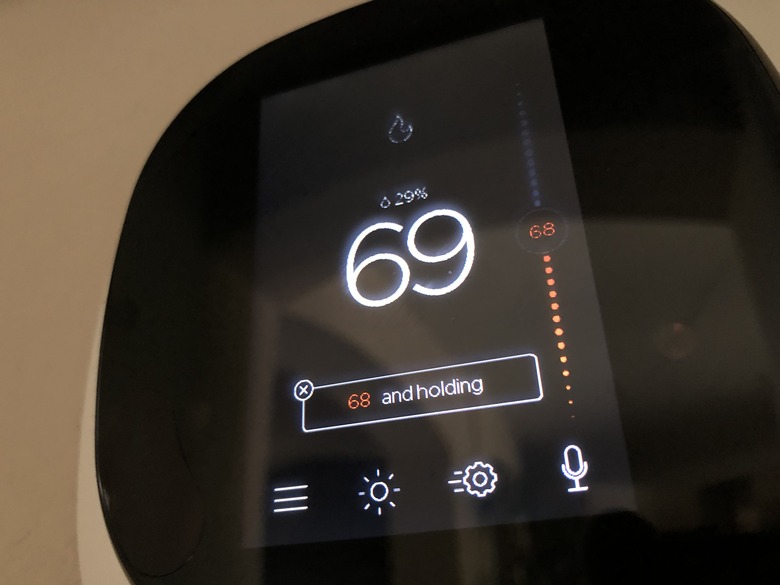How To Troubleshoot A Rheem Thermostat
We may receive a commission on purchases made from links.
Today's HVAC systems are more complex than those of 10 or 20 years ago, including components such as humidifiers, air exchangers and heat pumps, and the thermostats that control them also have to be more complex. Take the Rheem EcoNet, which is a Wi-Fi-enabled smart thermostat that can regulate heating and cooling (and has the ability to automatically switch between these functions) as well as being able to regulate humidity, control the water heater, monitor the weather and communicate with a home monitor, such as Amazon Alexa. It can't play music or order food, but who knows ... Rheem may add those features in the future.
When something goes wrong with one of these, you need the manual to troubleshoot the problem because it's highly likely that one of the settings is off, and there are a lot of settings. However, if you're sure the settings are correct, there could be something wrong with the thermostat or the wiring. That's true for any Rheem thermostat, even one with less functionality, such as the Rheem RHC-TST314UNMS, and there are a few things you can check yourself.
Check the Thermostat for Power
Check the Thermostat for Power
If the thermostat LED doesn't light up and the heating and cooling systems aren't working, try changing the battery. If that doesn't help or the thermostat doesn't have a battery, it may have loose wiring, or it may not be getting power from the transformer. The first thing to do is check in the main service panel for a tripped breaker. If you don't find one, leave all the breakers as they are, switch the thermostat to "fan" and wait for the fan to come on. If nothing happens, remove the cover to expose the wires and test them with a multimeter.
Conventional thermostats can have six or more wires connected to them, while smart thermostats have only four that lead to a control bus, but they all have a power wire (red and connected to the R terminal), and most have a common wire (black or blue and connected to the C terminal). Set the meter to read AC volts and touch the leads to those two terminals. A reading of 24 volts confirms power, but if you get a reading of zero, make sure the wires are connected properly and try again. If the reading is still zero, call an HVAC technician to inspect the system wiring and the transformer.
Check the Thermostat Location
Check the Thermostat Location
A thermostat has to be in a location representative of the home's general environment to properly control the environment. Rheem recommends putting it 5 feet from the floor in a frequently used room. It shouldn't be close to a window or door, near a register or return vent, behind furniture or on a section of the wall with pipes or ductwork.
If the house is continually cold, it could be because the thermostat thinks the house is warmer than it is because it's in direct sunlight or there are hot water pipes in the wall behind it. Similarly, if the house is always too warm, it could be that the thermostat is in a direct draft from a window across the room. If you discover that you need to move the thermostat, call an HVAC technician because it involves running new wires.
More Troubleshooting Tips
More Troubleshooting Tips
All thermostats have to be installed perfectly level, or their temperature sensors won't work properly. Put a torpedo level on the thermostat and if the bubble isn't centered, loosen the screws on the mounting plate, adjust the plate to be level and tighten the screws.
Sometimes, the cause of a malfunction can be traced to an improper setting that you can fix without the manual. If the thermostat has a switch to toggle from "fan" to "auto," make sure it's on "auto." If you have a smart thermostat, it may be set to vacation mode, so follow the necessary procedure to switch out of this mode.
